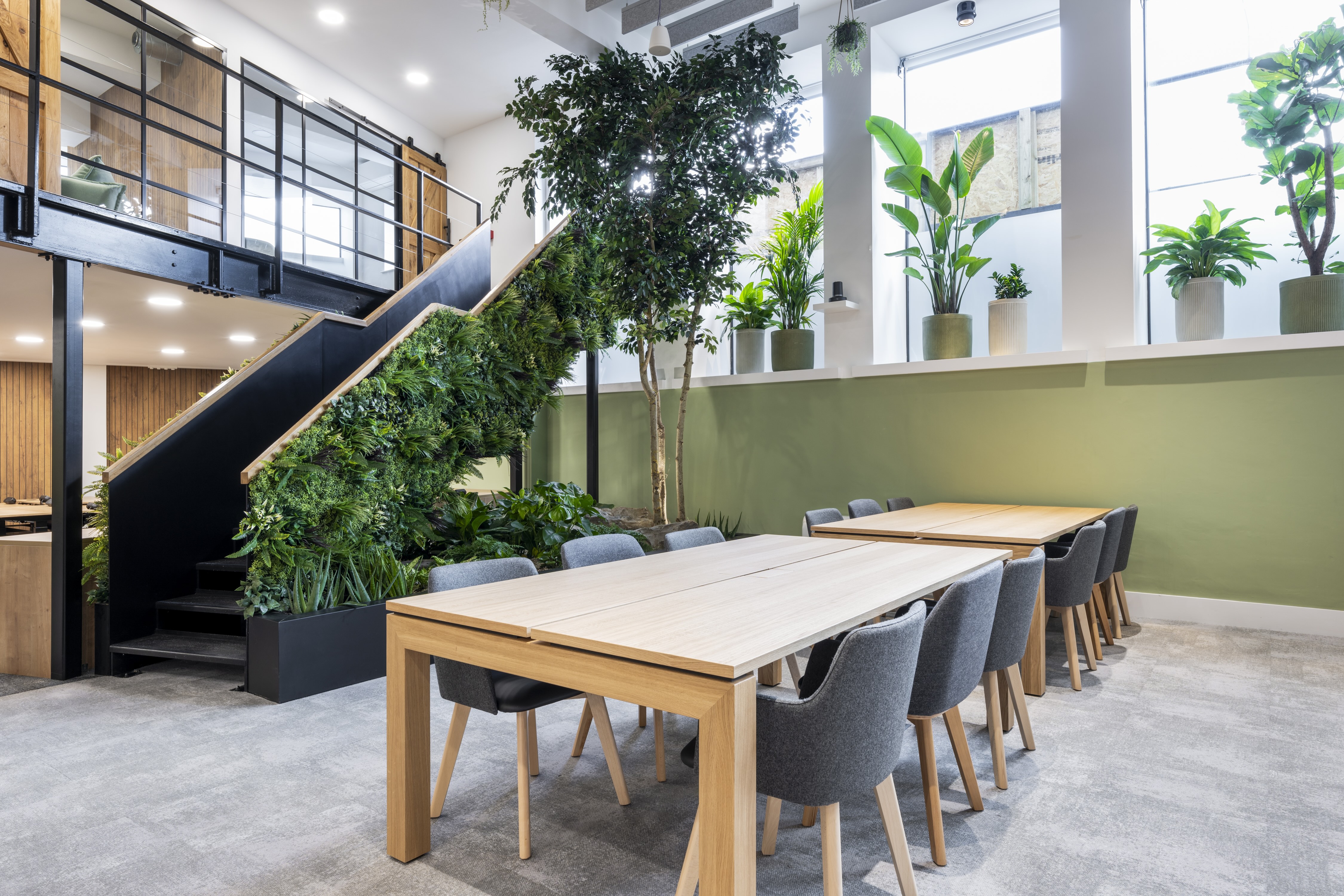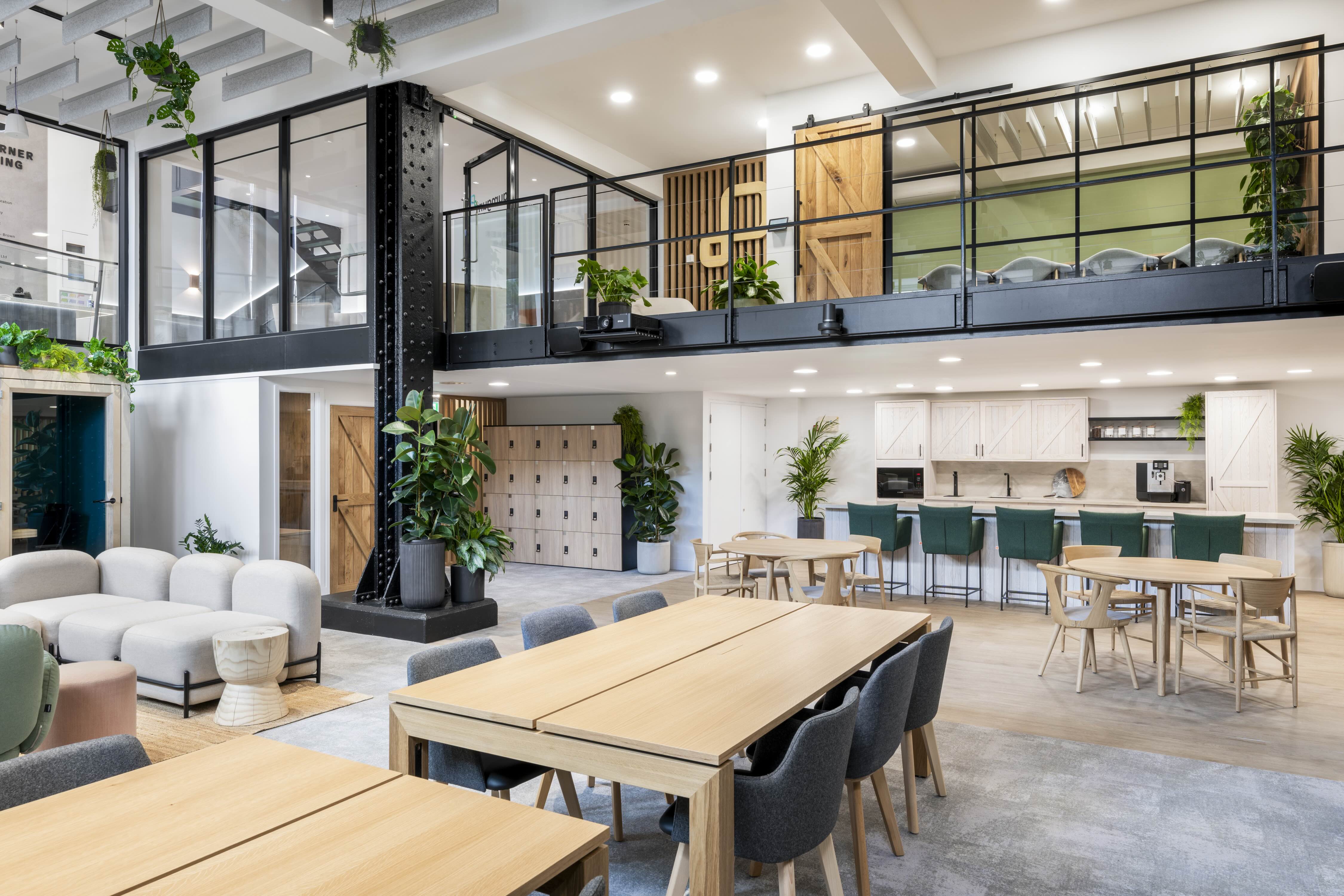Getting teams into a productive rhythm in a hybrid world



In the past, securing a private office meant committing to a long-term conventional lease and managing every part of the process independently. Today, that’s no longer the only option.
The rise of flexible workspace has popularised a new model: the managed office, where everything from design to daily operations is handled by a provider, with the business simply moving in.
For occupiers and owners reviewing their office strategy, understanding the differences between a managed office and a conventional lease is key to choosing the right solution.

Both conventional and managed offices allow for a high degree of personalisation. Whether through branding, layout or materials, either option supports a workspace designed to reflect company culture and ways of working.
Unlike serviced offices, both managed and conventional leases typically offer exclusive use of all amenities. Businesses gain access to a self-contained space, such as a full floor or unit, with private kitchens, meeting rooms and breakout areas.

Managed offices are usually offered on shorter, more flexible terms, ranging from 12 to 36 months. This suits teams that are scaling, adapting to hybrid work, or planning short- to mid-term commitments.
Conventional leases have historically involved longer commitments, even as long as 20 years. However, even conventional leases are now being offered on shorter terms. Ten years with a break at 5, and 5 years with a break at 3, are popular options, and are generally favoured by larger companies with long-term stability.
A managed office is typically delivered in 8–12 weeks, thanks to streamlined procurement and an experienced delivery partner.
In contrast, conventional leases involve a more fragmented process, with businesses responsible for sourcing contractors and managing the fit-out, often resulting in timelines that extend to 16 weeks or more.
Conventional leases require an upfront capital expenditure (CapEx) investment, covering design, construction, furnishings, and compliance. These projects are often managed in-house or via third-party agencies.
Managed office providers include fit-out and furnishing in the monthly price, reducing upfront costs and minimising the need for internal resources to be directed towards managing a time-consuming office move.

In a managed office, day-to-day operations — from cleaning and maintenance to guest services and ad hoc requests — are handled by the provider. This creates a hospitality-grade experience with minimal oversight required by the tenant.
Conventional leases require the business to contract, coordinate and pay for each service individually. While this can offer more control, it also introduces greater complexity and administrative burden.
[Image placeholder: Office services in action — cleaning or deliveries]
Managed offices offer a single monthly invoice that encompasses rent, services, utilities, and maintenance, simplifying financial planning and forecasting.
By contrast, conventional leases involve multiple suppliers and variable invoices. Predicting total occupancy cost requires more effort and can fluctuate month to month.

Each workspace model has its strengths. The choice between a managed office and a conventional lease often comes down to:
For occupiers prioritising flexibility, speed and simplicity, a managed office may be the better fit. For others with in-house facilities teams and long-term plans, a conventional lease may still offer value.
Kitt is a managed office operator that supports occupiers and owners in elevating their office experience – from search to move-in and beyond – with custom-designed workspaces, short-form leases, and a fully managed service powered by smart technology.
Looking for a flexible, fully managed office? Explore available spaces or learn how Kitt works.
With hybrid models en vogue and ever-evolving team dynamics, the office is no longer just about desks — it's about culture, experience and flexibility.
In response, businesses across the UK are rethinking what the workplace should look like. Managed offices have emerged as one of the leading solutions, offering fully serviced, private, and customisable workspaces.
A managed office is a private workspace delivered as a complete service. It combines the flexibility of a serviced office with the control and customisation of a traditional lease — all wrapped into a single monthly cost.
Unlike serviced offices, which are often shared, managed offices give companies their own branded space, built to their layout and operational preferences. They're typically measured in square footage, not just desks, allowing you to create the layout that works best for your team.

Who are managed offices for?
Managed offices are an ideal fit for a wide range of business types, from scale-ups to project teams and corporate headquarters.
Typical occupiers include:
Managed spaces typically range from 1,000 to 15,000 sq ft, making them suitable for teams of 10 to 150 or more.

Choosing a managed office offers a number of strategic and operational advantages:
Design, build, furniture, internet and services are all included
Tailor the space to your brand and ways of working
One monthly fee with no separate service contracts
Scale up or down more easily than with conventional leases
Move in quickly, without the 6+ month fit-out timeline
As hybrid working continues to shape the future of work, managed offices allow you to curate an office with purpose, creating a space where people genuinely want to be.
Finding managed office space can be a challenge. Most private spaces are listed with traditional leases, meaning the occupier is responsible for the design, build, and ongoing management, often across a multi-year term.
That's where Kitt comes in.
At Kitt, we help businesses design and manage fully customised workspaces – tailored to their team, culture, and goals. Our platform simplifies the process, and our team handles the heavy lifting, making moving into an office and maintaining it easy.
Explore our available spaces or contact our team.